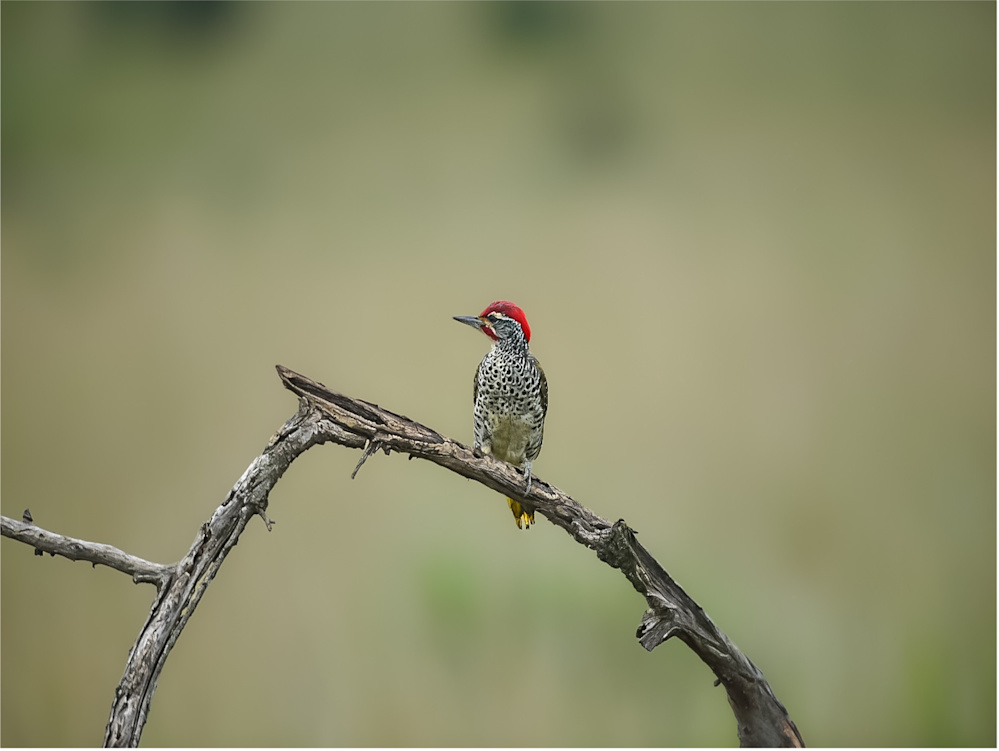May 2025
Biodiversity
The art of chiselling
in BiodiversityShare:
The art of chiselling

The Nubian woodpecker (Campethera nubica) is a fascinating and uniquely adapted bird, well-known for its extraordinary ability to peck up to 20 times per second - amounting to an astonishing 8 000 to 12 000 pecks in a single day. This incredible behaviour is not just a survival tactic but a marvel of evolutionary adaptation. Living in arid and semi-arid savannas, the Nubian woodpecker has evolved specialised features that allow it to thrive in its environment.
One of its most remarkable adaptations is its long, sticky, and barbed tongue, which can extend far beyond the beak. This specialised tongue acts like a spear and is perfectly designed for extracting insects and larvae from deep within tree bark and crevices. Even more impressively, the tongue wraps around the skull when retracted, forming a cushion that helps absorb the shock of relentless pecking - an adaptation that protects the bird’s brain from damage.
In addition to this, the Nubian woodpecker possesses an exceptionally hard and chisel-like mandible, which enables it to bore into wood with precision and force. This strong beak also serves a crucial role in communication. By drumming on hollow logs or dry branches, the woodpecker creates a resonant sound that echoes through the savannah - a form of acoustic signalling used to attract mates and to assert territorial boundaries. These drumming patterns are species-specific and can be heard from considerable distances, serving as an efficient and energy-saving way to communicate in dense habitats.
Altogether, the Nubian woodpecker is a testament to the power of natural selection, showcasing an incredible suite of anatomical and behavioural traits that allow it to flourish in the wild. From its shock-absorbing skull to its sound-producing drumming behaviour, every part of its anatomy has a purpose finely tuned by evolution.

By Saitoti Lekudayo Laizer
Senior Chef De Partie


